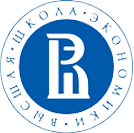The results of the new CPI suggest that the overwhelming majority of countries have made no progress: if compared to the CPI findings of the previous year, the changes are minimal. Just as in the two previous years, in 2019 the perception of corruption was measured in 180 countries. Most notably, two-thirds of them have scored below 50 points, with an average score of only 43.
The top countries have not changed: in 2019 these are again Denmark, New Zealand, Finland, Singapore, Sweden and Switzerland that have scored from 85 to 87 points. The bottom countries in the CPI ranking are Venezuela, Yemen, Syria, South Sudan and Somalia that have got from 9 to 16 points. The most corrupt region is Sub-Saharan Africa, whereas the least corrupt is Western Europe.
The Russian Federation, as in the previous year, has got 28 points and risen by one place if compared to 2018, being ranked 137th among all countries. Liberia, the Dominican Republic, Paraguay, Papua New Guinea, Lebanon, Kenya, Mauritania and Uganda have scored the same number of points.
Some developed countries have backslid in the 2019 ranking: Canada for instance, has lost four points, whereas France and the UK three. The United States has lost two points and has not been listed in the top twenty for two years in a row.
At the same time, some post-Soviet countries have improved their corruption perceptions indices. Armenia has made the most progress, being ranked 77th: its overall score has increased at once by 7 points (from 35 to 42). Azerbaijan has gained 5 points and Kazakhstan three. Uzbekistan has improved its result by two points, while Belarus and Kirgizstan by one.
However, this positive trend is not registered in all countries of the region. Ukraine for example, despite all the efforts it made in 2019 to curb corruption, such as the establishment of the High Anti-Corruption Court and the criminalization of illicit enrichment of public officials, has lost two points, sinking to the 126th place. Georgia has also lost two points, whilst Moldova and Turkmenistan one.
In addition to the ranking itself, the CPI 2019 includes a separate analysis of the link between the levels of corruption perceptions and political integrity. The latter, in this case, is reflected in legal acts and rules that regulate electoral campaigns and party funding and limit the influence of stakeholders on the electoral process. The existence of such legislation, the effectiveness of its enforcement along with the organization of broader consultation processes open to civil society and business participation are also taken into account when measuring the level of political integrity.
The TI researchers compared these data with the CPI findings and came to the conclusion that the countries where party and electoral campaigns funding is heavily influenced by stakeholders show less progress in the fight against corruption. Conversely, the countries where this funding is in line with the legislation and public consultation is in place the CPI results are better. In addition, the analysis suggests that 60% of the countries that have constantly improved their CPI scores since 2012 have also significantly strengthened their regulations around party and campaign donations.
For information: Transparency International has regularly released its Corruption Perceptions Index for as much as 25 years. In the meantime, the methodology for calculating the CPI has changed more than once. In particular, the 100-point system that is being currently applied was introduced as late as in 2012. The CPI is based on expert assessments and surveys of business executives and is designed to indicate the level of corruption perceptions in the public sector. TI does not carry out its own surveys, using 13 different external sources (such as the World Bank Group, the World Economic Forum, the Asian and African Development Banks and the like), whose results are customized according to the single point system of assessment. Based on the findings of the survey, the countries are ranked in accordance with the overall score they got, from 0 (highly corrupt) to 100 (very clean). It should be highlighted that the CPI, like most other rankings measuring the level of corruption, has a number of flaws, which we have already written about (in Russian).
Firstly, it should be reminded that the CPI reflects only the level of perception of corruption rather than the real results of the changes that a country undergoes in the field of the fight against corruption. Secondly, as there is no single interpretation of the phenomenon of corruption in different countries and given the highly subjective character of the methods of the research, it does not mean that the top countries in the ranking are immune to corruption. Denmark for example, has been ranked 1st or 2nd in recent years. However, in 2018 a scandal over massive money laundering through the Estonian branch of Danske Bank, Denmark’s largest bank, erupted in the country.

